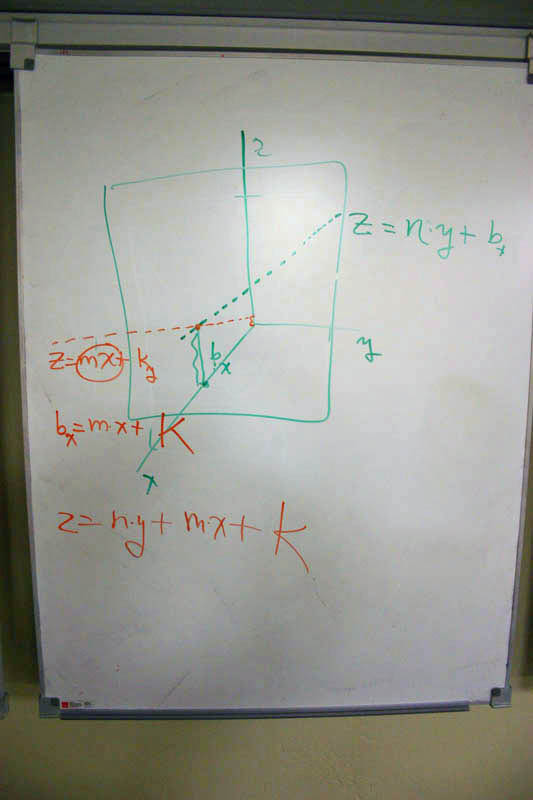We all know what a plane is in geometry. Right?
Here are some definitions from the web:
The Free Dictionary
plane
n.
1. Mathematics A surface containing all the straight lines that connect any two points on it.
Merriam Webster
Function: noun
Etymology: Latin planum, from neuter of planus level
Date: 1571
1 a : a surface in which if any two points are chosen a straight line joining them lies wholly in that surface b : a flat or level surface
Euclid's elements
5. A surface is that whicdh has length and breadth only.
7. A plane surface is a surface which lies evenly with the straight lines on itself.
Us
We looked for a definition of "plane (surface)" that would do work for us in answering the question, Suppose a function f(x,y) has a plane as its graph. What must be true about that function?.
One that we ended with (I didn't record all the suggestions) is:
A function of x and y has a plane as its graph if all pairs of parallel lines in the x-y plane project into parallel lines on the function's graph. (As a side note, it makes me wonder if it would be equivalent to say that perpendicular lines in the x-y plane project into perpendicular lines on the function's graph.)
A consequence of this definition is that if a function's graph is a plane, then lines formed by the intersection of the graph and parallel planes will produce parallel lines, and the rates of change of those lines (within the planes in which they are formed) will be equal. (Question, will this be true of every pair of parallel planes?)
This observation allowed us to to give a general form for any function that has a plane as its graph:

The derivation of this general form for any point on the graph of z(x,y) will lie on a line parallel to the y-z plane that can be represented by z = ny + bx, where the value of b depends on the value of x. But values of bx will lie along a line of the form z = mx + k. Thus, any point on the graph will be expressible as z = mx + ny + k for constants m, n, and k.